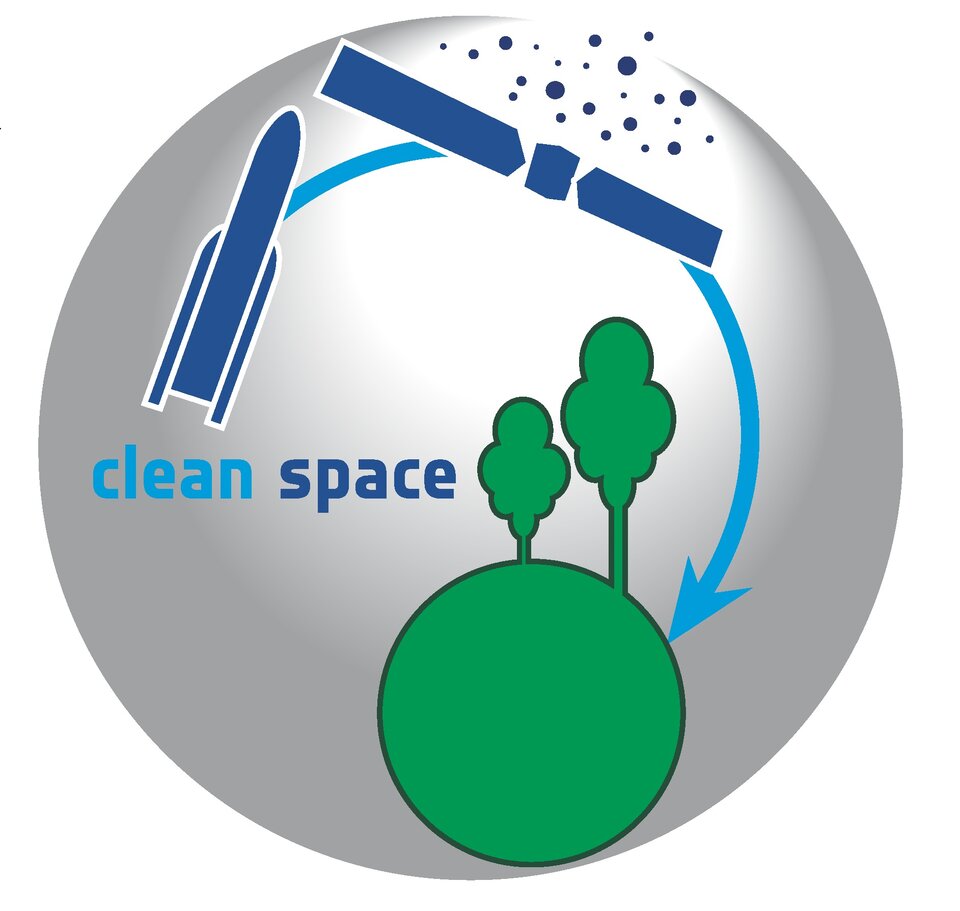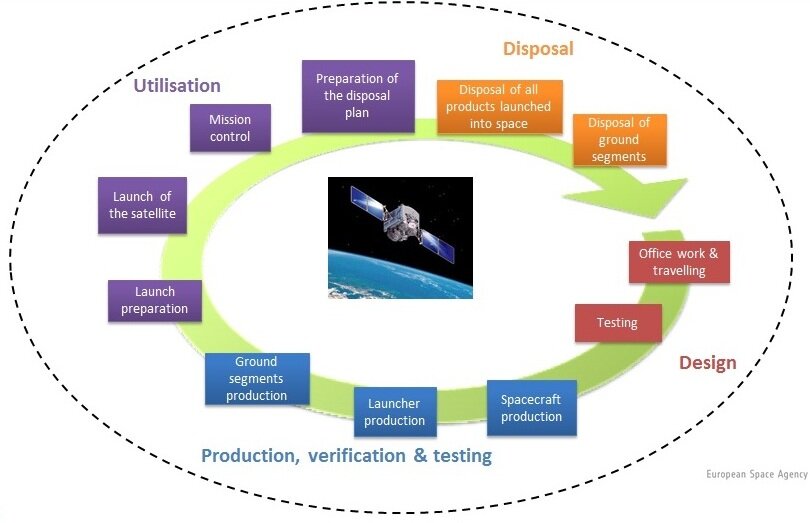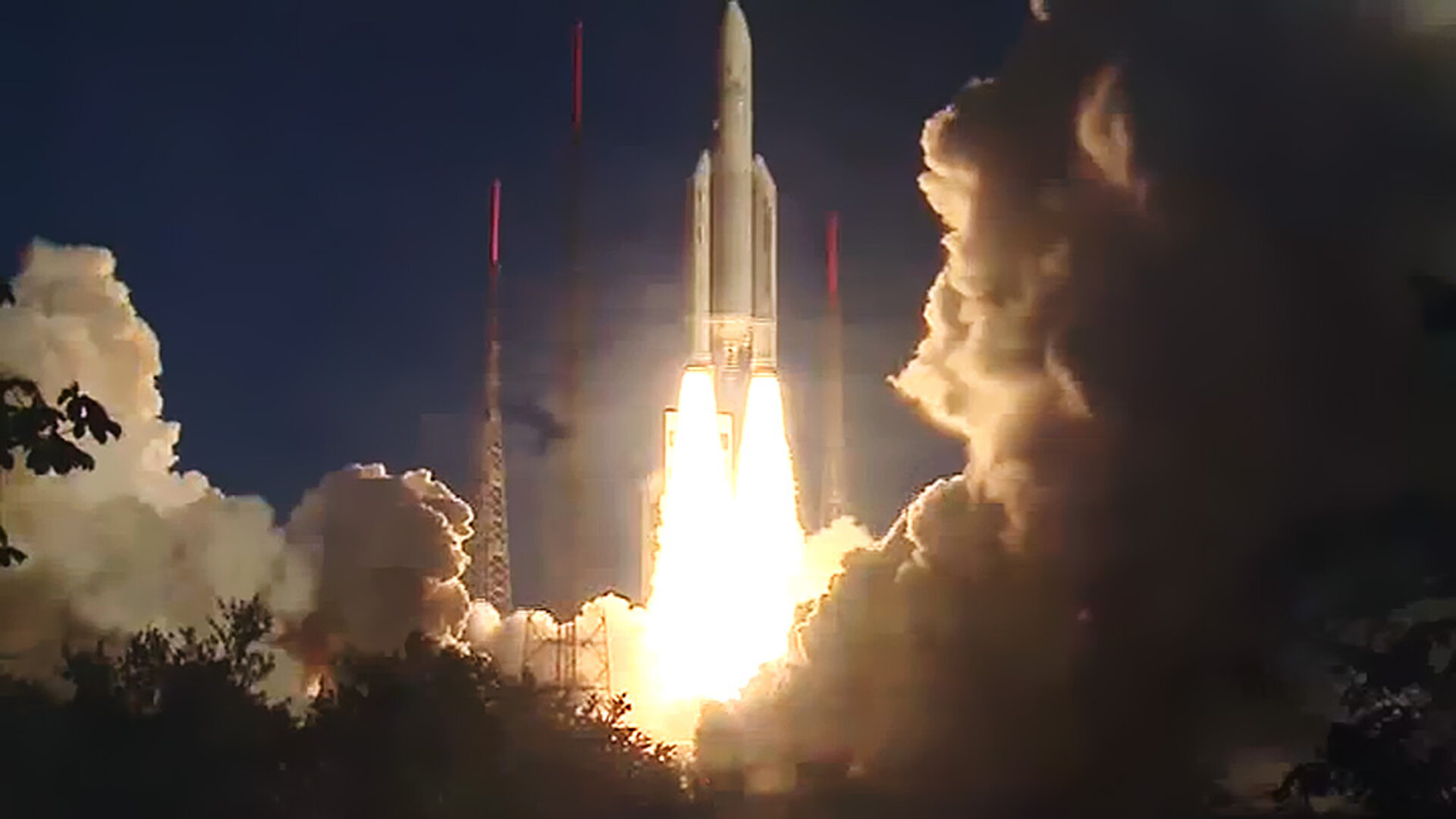Partner sought to assess environmental impacts of satellite construction
Newton’s Third Law – ‘For every action there is an equal and opposite reaction’ – is the theoretical basis of spaceflight. It also applies more widely: building spacecraft and launching them into orbit inevitably implies opposing impacts on the terrestrial environment. Today nobody can say for sure what they are – but ESA’s Clean Space initiative is working to change this.
As a step on the way to developing authoritative means of assessing the environment impacts of ESA activities and space projects, Clean Space is issuing a tender to collect necessary background data on commonly used space materials and manufacturing processes: where do they originate? What consequences do they have for the wider environment?
All of us are becoming progressively more aware that human activities can have harmful impacts on the world we live on. Citizens’ concerns are being translated into stringent national, European and international regulations, and companies increasingly need to demonstrate that they are acting in a sustainable way.
The space sector is hardly immune from these developments. ESA is strongly committed to maintaining the highest environmental standards for European citizens and has adopted the ambition of being a model agency for clean, responsible and sustainable space activities through its Agenda 2015 action plan.
This ambition has been formally translated through the establishment of the Clean Space initiative at the start of 2013, aimed at both quantifying and mitigating the environmental impacts of space activities both on the ground and in space.

Clean Space is a multi-faceted effort involving four separate branches; as part of the first branch, ESA is pioneering the study of the space sector’s environmental impacts. A complete ‘Life Cycle Assessment’ (LCA) of the current European family of launchers has already been completed, assessing their cradle-to-grave impacts. This endeavour is now being expanded to cover more general space mission life cycles, carried out through a General Study Programme activity begun in January 2012.
LCA – a standardised industrial methodology recognised by the International Organization for Standardization (ISO) – is the most widely employed yardstick. However, for the robust assessment of space projects in particular, a customised framework will be required, for common adoption by Europe’s space agencies, companies and research entities.
The framework should include dedicated databases and tools for space activities’ LCAs, and should be capable of assessing the risk of supply chain disruptions already during early design phases.
An initial version of such an environmental analysis tool will be derived from current studies and implemented in ESA’s Concurrent Design Facility to assess and compare the environmental impact of preliminary design choices.

However, while user feedback will be reported in order to enhance the framework development and populate relevant space project LCA databases, there is still the need initially to take account of the particular specificities of space projects.
Accordingly, ESA is now opening an Invitation to Tender for the preliminary collection of necessary background data for various space materials and manufacturing processes.
For more information check the invitation package, accessible via ESA’s Electronic Mailing Invitation to Tender System (EMITS).





